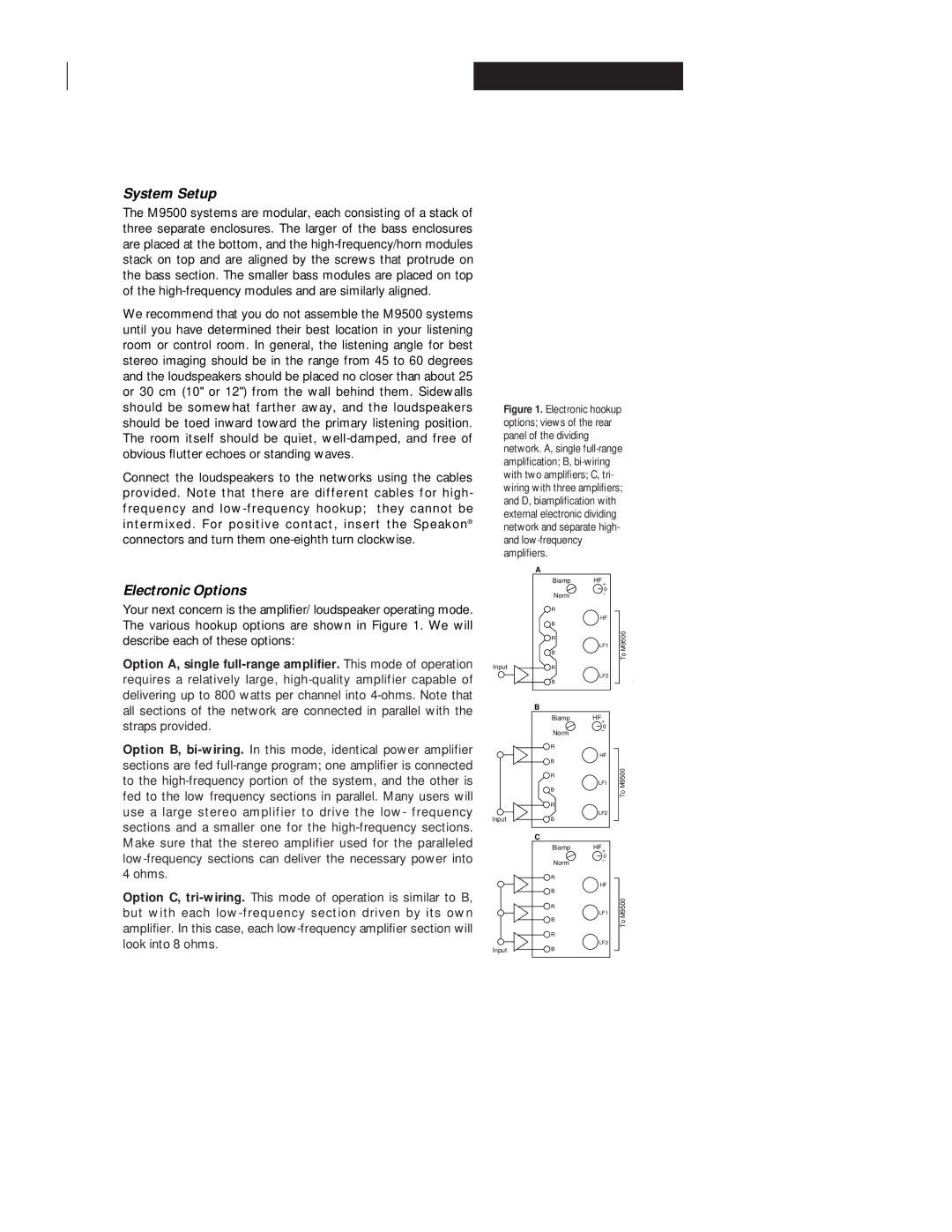M9500 specifications
The JBL M9500 is a remarkable loudspeaker that exemplifies the marriage of advanced technology and exceptional sound quality. Designed for audiophiles and professional sound engineers alike, this loudspeaker is a prime choice for both studio monitoring and live sound applications.One of the standout features of the JBL M9500 is its 15-inch woofer. This large driver is engineered to deliver deep, powerful bass response, allowing it to handle a wide frequency range with ease. Coupled with a high-efficiency compression driver, the M9500 achieves clear and articulate mid to high frequencies, ensuring that every detail of the audio is reproduced with precision. The crossover network in the M9500 is optimized to provide a smooth transition between the woofer and the high-frequency driver, producing a cohesive soundstage.
The design of the M9500 not only focuses on performance but also on durability. Its robust cabinet construction is built to withstand the rigors of both touring and studio use. The enclosure features a ported design that enhances bass response while minimizing distortion, which is critical in both music production and live sound situations. Additionally, the speaker is equipped with a rugged grille to protect the drivers from damage during transport or rigorous use.
In terms of connectivity, the JBL M9500 offers a variety of input options, making it versatile for different setups. This ensures compatibility with a wide range of audio equipment, from mixing consoles to home audio systems. The speaker's impedance is designed to integrate seamlessly into various configurations, providing flexibility for both professionals and hobbyists.
The M9500 also features advanced sound shaping technologies, such as Intelligent Bass Management, which allows users to customize their listening experience according to their specific environment and preferences. This feature is especially useful in live sound applications where venue acoustics can vary dramatically.
Overall, the JBL M9500 stands out in the crowded loudspeaker market due to its powerful sound output, robust build quality, and versatility. Whether it's for studio monitoring or live performance, the M9500 delivers a remarkable sonic experience, making it a top choice for sound professionals and enthusiasts alike. With its combination of technology, design, and user-friendly features, the JBL M9500 proves to be a worthy investment for anyone serious about high-quality audio.

